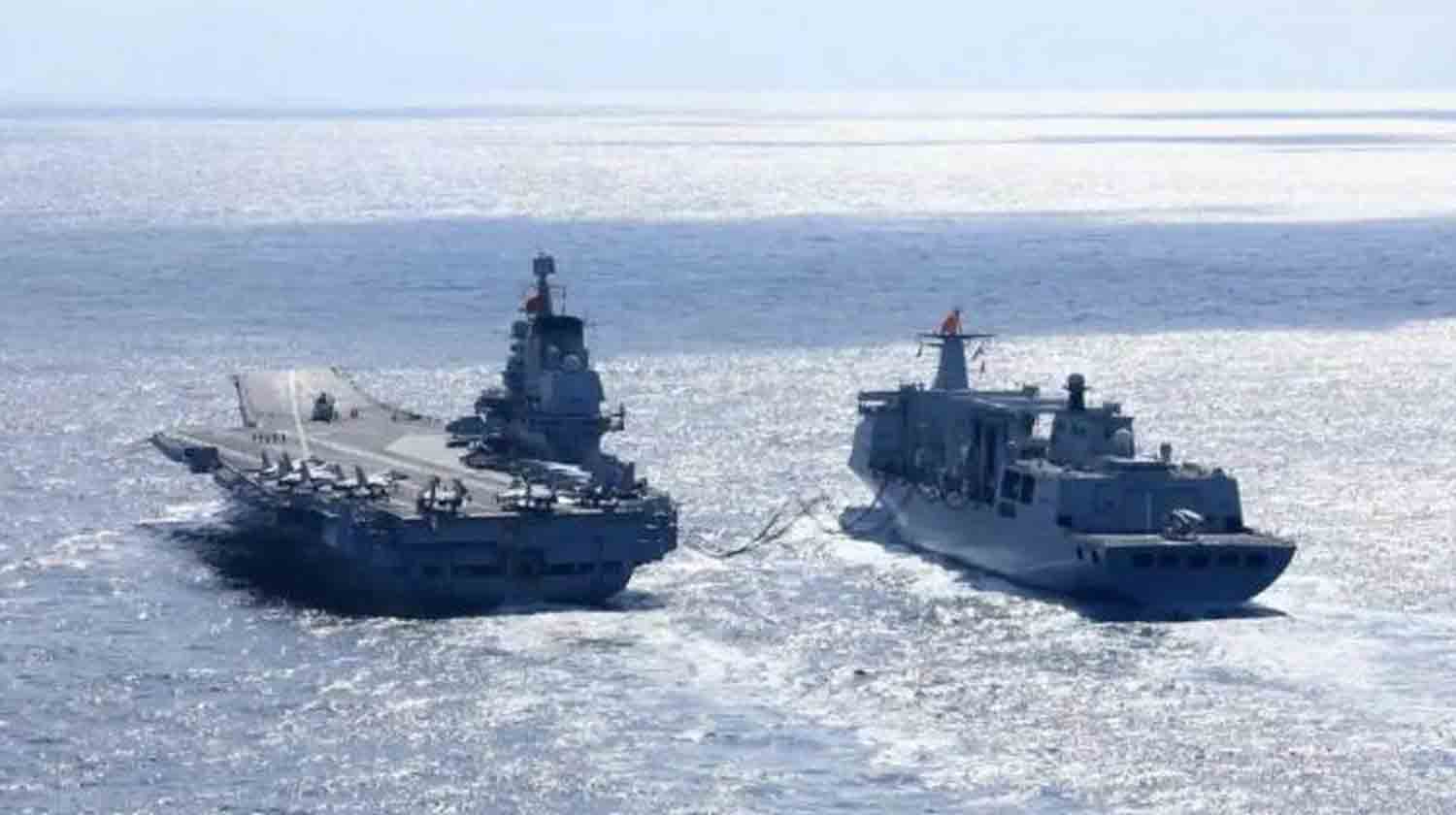Satellite imagery from January 31 indicates that the People’s Liberation Army Navy has stationed one aircraft carrier, one coast guard vessel, and 58 maritime militia ships in the vicinity of Pag-asa Island. This military presence is particularly significant due to the island’s strategic importance.
Pag-asa Island, also referred to as Thitu Island, is a crucial component of the contested Spratly Archipelago and serves as a vital asset for any nation seeking to establish control over the South China Sea. This body of water is one of the most heavily trafficked maritime routes globally, with around 30% of international trade transiting through it.
As the area continues to be a focal point of geopolitical strife, Pag-asa serves as a key military and logistical center, offering essential operational benefits.
Situated approximately 480 kilometers from Taiwan, 450 kilometers from Vietnam, and around 500 kilometers from mainland China, the island is strategically positioned in a region where actions are meticulously observed by both regional and global powers.
In contrast to China’s reliance on artificial islands, Pag-asa is a naturally formed landmass featuring a strategically important 1.3 km runway. This infrastructure not only facilitates military aviation but also enhances air and maritime superiority in the area.
While China is constructing military installations on artificial islands such as Mischief Reef and Subi Reef, Pag-asa, under Philippine administration, occupies a pivotal role in countering China’s influence in the South China Sea.
The island serves a crucial military function by acting as a corridor for surveillance and protection of trade routes, while also securing valuable resources such as oil and natural gas located in the contested waters surrounding the Spratlys.
China’s assertion of nearly the entire Spratly Archipelago places it at odds with international law and the territorial claims of neighboring countries. Consequently, Pag-asa Island has evolved into both a tangible and symbolic stronghold for the Philippines, bolstering its stance against China’s territorial ambitions.
For Taiwan, which governs Taiping Island, the strategic dynamics in the region are delicate, as Pag-asa provides a more advantageous base for observing China’s military developments.
In the context of the ongoing South China Sea conflict, Pag-asa transcends its status as a mere island; it represents a vital military and logistical asset that confers a strategic edge to any nation that can assert control over it.
With the increasing influence of China and its assertive territorial claims, this island stands as a significant focal point for potential geopolitical confrontations in the area.
The deployment of a carrier, coast guard, and militia may serve as a strategy to oversee and manage these essential maritime routes, ensuring supremacy at sea and facilitating swift responses when required.
China could leverage these assets to establish a denial zone around Pag-asa Island, complicating the operational capabilities of other nations, particularly the United States, in the event of a conflict. The presence of a carrier, coast guard, and militia enables China to conduct operations aimed at deterring any perceived threats or intrusions into its claimed territories.
The aircraft carrier serves as a means to project military power and showcase strength, while the coast guard and militia are tasked with regular patrols, ensuring a continuous presence and oversight of the area. This approach may also facilitate control over fishing resources and potential natural resource deposits within the region.
From the perspective of the Philippines, the presence of Chinese military forces near Pag-asa Island could be interpreted as a tactic to exert political and military pressure on the Philippines, compelling it to reconsider its claims or at least restrict its military and civil operations in the area. This may also involve interference with infrastructure development, as highlighted in discussions regarding the island’s enhancements.
Currently, there is no detailed information regarding the specific intentions behind the substantial naval presence near Pag-asa Island. The range of possibilities spans from naval exercises to displays of force, and even the potential for invasion.
In recent years, the People’s Liberation Army Navy (PLAN) has undertaken numerous exercises that involved a considerable buildup of forces in targeted areas, similar to the situation near Pag-asa Island observed on January 31, 2024. A significant example occurred in the summer of 2022 when the PLAN conducted extensive maneuvers in the East China Sea.
Chinese naval forces, including aircraft carriers, destroyers, and support vessels, were assembled near the Senkaku Islands around mid-July 2022. This area is subject to territorial disputes between China and Japan. The concentration of these forces was perceived as a demonstration of China’s ability to project military power and assert its claims in the region.
In a separate development, on November 15, 2023, the People’s Liberation Army Navy (PLAN) executed a large-scale joint military exercise in the South China Sea, particularly near the Spratly Islands. This operation featured a diverse array of naval ships, aircraft, and maritime militia vessels, highlighting a coordinated strategy to simulate dominance over these contested waters.
This exercise gained particular significance amid rising diplomatic tensions between China and various Southeast Asian countries regarding maritime boundaries and resource entitlements. The show of naval strength was interpreted as a strategic effort to bolster China’s claims associated with the nine-dash line in the South China Sea.
As early as February 8, 2024, prior to the incident near Pag-asa Island, another significant assembly of Chinese naval forces occurred near the Paracel Islands. This operation involved not only the PLAN but also a considerable number of China Coast Guard ships and maritime militia boats, establishing a strong presence intended to deter any competing claims in the region.
China’s recent military exercise is a component of its strategy to establish a more normalized military presence in contested waters, effectively challenging existing conditions and countering international maritime law decisions that have previously undermined its extensive territorial claims.
The activities of the People’s Liberation Army Navy (PLAN) are not standalone occurrences; rather, they reflect a consistent trend of assertiveness in maritime areas where China faces territorial disputes.
Each military exercise serves several functions: it evaluates the operational capabilities and preparedness of the Chinese navy, communicates a strong message to regional competitors regarding China’s determination to uphold its claims, and may also serve to dissuade other nations from pursuing their activities in these contested regions.
The international community closely monitors these developments, as they carry significant implications for regional stability, the principle of freedom of navigation, and the overall geopolitical dynamics within the Asia-Pacific region.
Discover more from Defence Talks | Defense News Hub, Military Updates, Security Insights
Subscribe to get the latest posts sent to your email.





